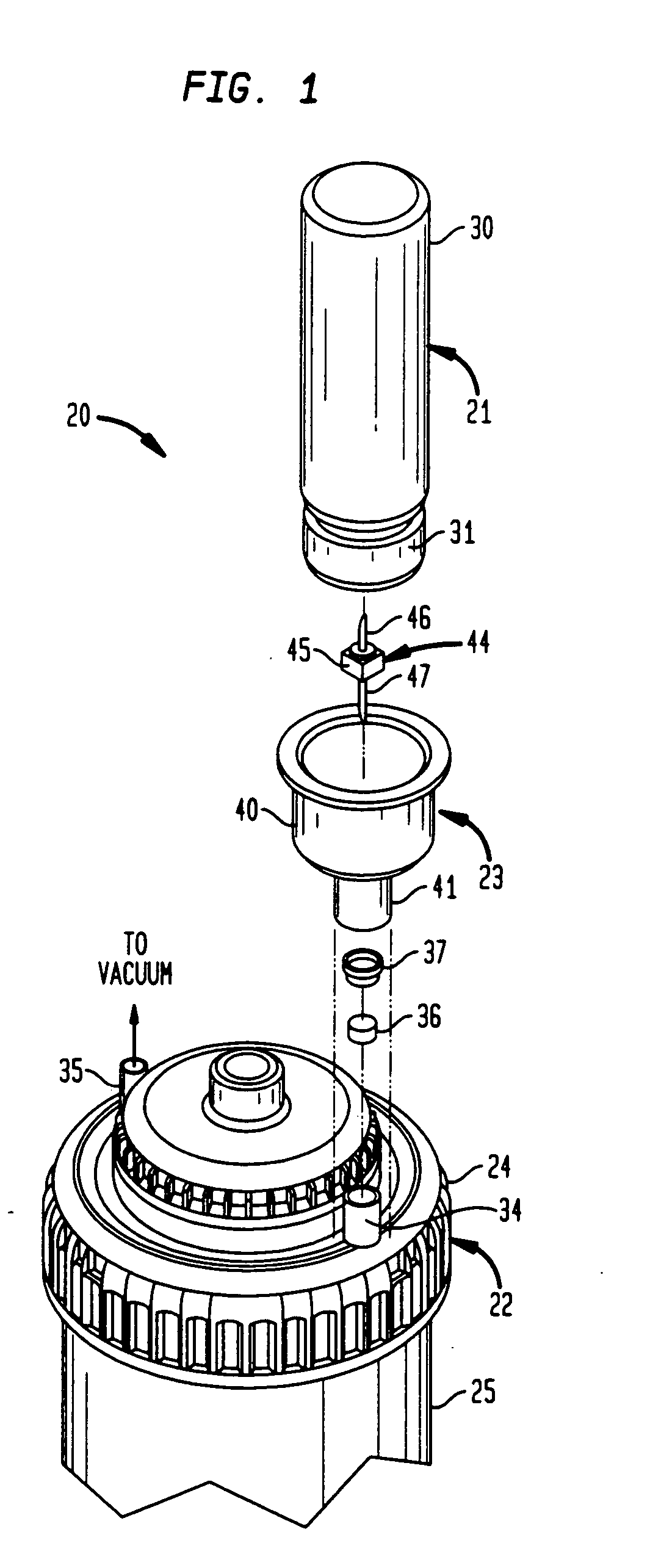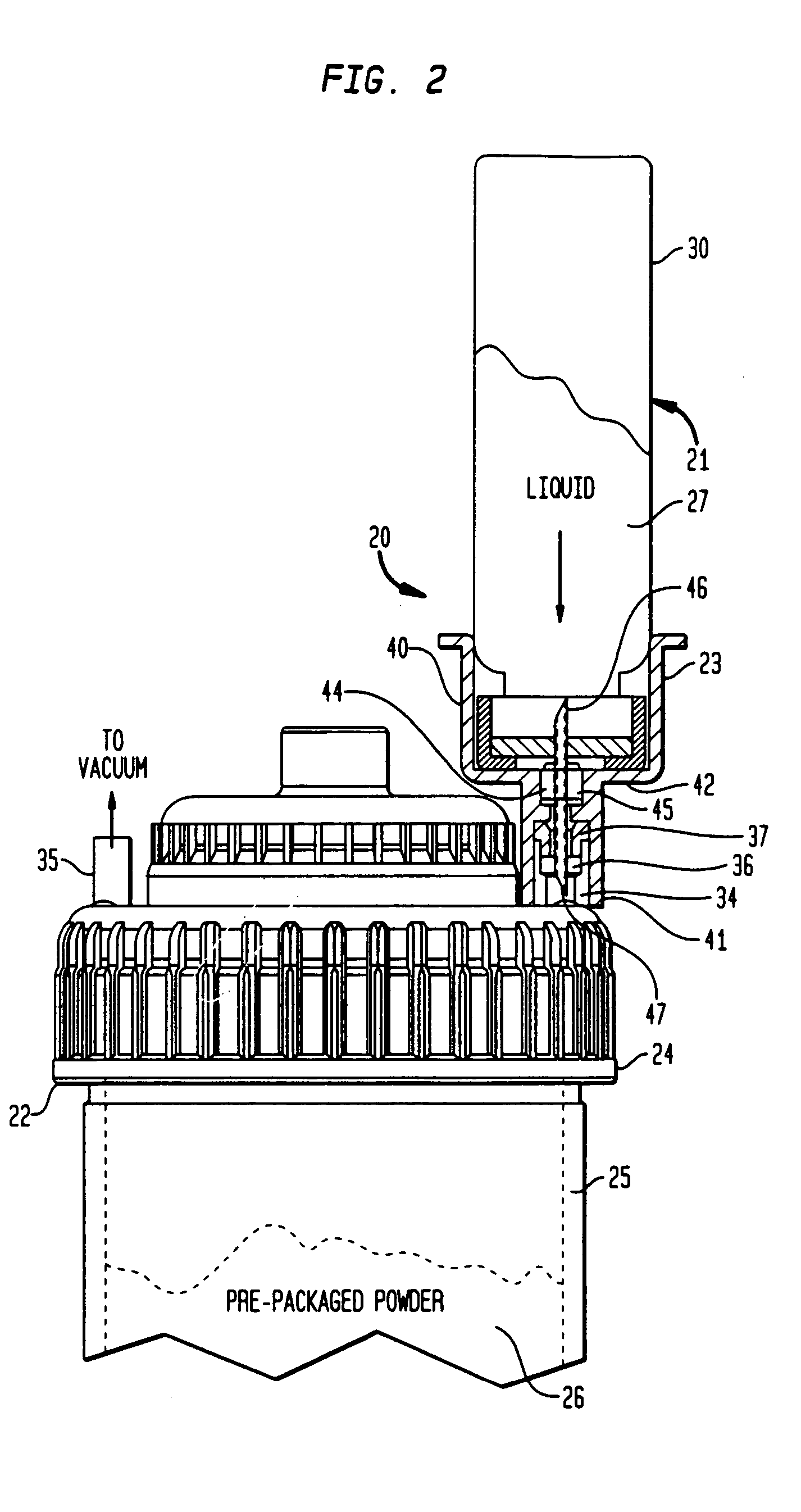Apparatus for mixing and dispensing components
a technology applied in the field of apparatus for mixing and dispensing components, can solve the problems of limiting activity, reducing life quality, and reducing the risk of vertebral fracture surgery, and achieve the effect of limiting exposur
- Summary
- Abstract
- Description
- Claims
- Application Information
AI Technical Summary
Benefits of technology
Problems solved by technology
Method used
Image
Examples
Embodiment Construction
[0042] By referring to FIGS. 1-11, along with the following detailed discussion, the construction and operation of the preferred multi-component product handling and delivering systems of the present invention can best be understood. However, as will become evident from this disclosure, further alternate embodiments of the present invention can be implemented without departing from the scope of the present invention. Consequently, the embodiments detailed in FIGS. 1-11, and in the following detailed disclosure, are intended for exemplary purposes, and not as a limitation of the present invention.
[0043] The present invention can be employed with any type of vessel used to intermix the two or more components. Thus, the present invention is not limited to combining or mixing bone cements.
[0044] The components of the multi-component product handling and delivering systems of the present invention can be packaged and sold together as a kit.
[0045] In FIGS. 1, 2, 6, and 7, multi-component ...
PUM
 Login to View More
Login to View More Abstract
Description
Claims
Application Information
 Login to View More
Login to View More - R&D
- Intellectual Property
- Life Sciences
- Materials
- Tech Scout
- Unparalleled Data Quality
- Higher Quality Content
- 60% Fewer Hallucinations
Browse by: Latest US Patents, China's latest patents, Technical Efficacy Thesaurus, Application Domain, Technology Topic, Popular Technical Reports.
© 2025 PatSnap. All rights reserved.Legal|Privacy policy|Modern Slavery Act Transparency Statement|Sitemap|About US| Contact US: help@patsnap.com



